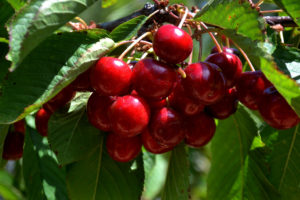 De Nova Agro offers seedlings and seedlings of various types of cherry rootstocks! All rootstock seedlings are obtained by clonal micropropagation and are free from diseases, viruses and are identical to each other (i.e. clones).
De Nova Agro offers seedlings and seedlings of various types of cherry rootstocks! All rootstock seedlings are obtained by clonal micropropagation and are free from diseases, viruses and are identical to each other (i.e. clones).
Cherry rootstocks obtained by the in vitro method have a number of advantages: They are absolutely free from diseases and viruses; They are the same since they were cloned; Such plants develop faster. The company has almost all modern cherry rootstocks in stock (GIZELA 6, Krymskaya 5) and accepts orders for any number of seedlings.
Large volume orders should be made a year in advance. The price for Cherry rootstocks is negotiable. Please contact our office for details. The De Nova Agro team will be happy to answer your questions!
Productivity: It has been established that the average yield for the years of fruiting does not depend on the scheme of planting trees, and a higher profitability of production was noted with a scheme of 5.0 × 3.0 and 5.0 × 2.5 m. In the third year after planting, we received 0 ,5-0.7, on the fifth – 8-13 kg of fruits from 1 tree. At 7–9 years of age, the yield, depending on the variety, was 10–18 kg from 1 tree.Frost resistance: In terms of frost resistance of the root system, it occupies an intermediate position between the Studenikovskaya cherry and Gizela 5, withstanding a temperature of -12 ° C.Growing features: Provides an average growth force of trees (according to our experiments, their height at the age of nine was 3.3-3.5 m).Trees are best planted according to the scheme 4.5-5 x 2.5-3 m, with a feeding area of 11–15 sq. meters.Advantages: Thanks to a well-developed root system and high resilience, the trees take root well in the garden and grow even on heavy, waterlogged soils. Resistant to root rot and bacterial canker. The best of all studied rootstocks is propagated by green cuttings (survival rate 98%), as well as horizontal layering. It has good compatibility with the main varieties of cherries. It serves as a kind of indicator of checking varieties for viruses.
GISELA
High-yielding, semi-dwarf rootstock obtained at the University of Giessen, Germany by crossing Prunus cerasus ‘Schattenmorelle’ x Prunus canescens. This rootstock has good adaptability to various soil and climatic conditions and an average vigor of growth.Main characteristics:
– Srednerosly rootstock for cherries;
– The tree has an open shape, crowns with right angles and developed side branches;
– Roots have good anchorage, do not form shoots;
– They are highly adaptable to various soils and climatic conditions;
– Abundant irrigation is mandatory;
– Resistant to the most common viruses and diseases;
– Differs in high winter hardiness;
– Differs in early fruiting, which begins from the second year after planting;
– Easily forms large and high-quality fruits.
Usage: The rootstock is compatible with a variety of sweet cherries and is easily shaped in a variety of pruning systems.
Recommended distance when planting in the garden (according to soil conditions, taking into account varietal characteristics and training of specialists) in a row from 2.5 – 0.8 m, between rows from 3.5 – 5.0 m. For the formation of a good fruit size and stimulating the growth of shoots, annual pruning of 3-4 year old wood is necessary. Ignoring the rule of annual pruning and a high level of agricultural technology can lead to a decrease in fruit size, a decrease in yield and a deterioration in its quality.
